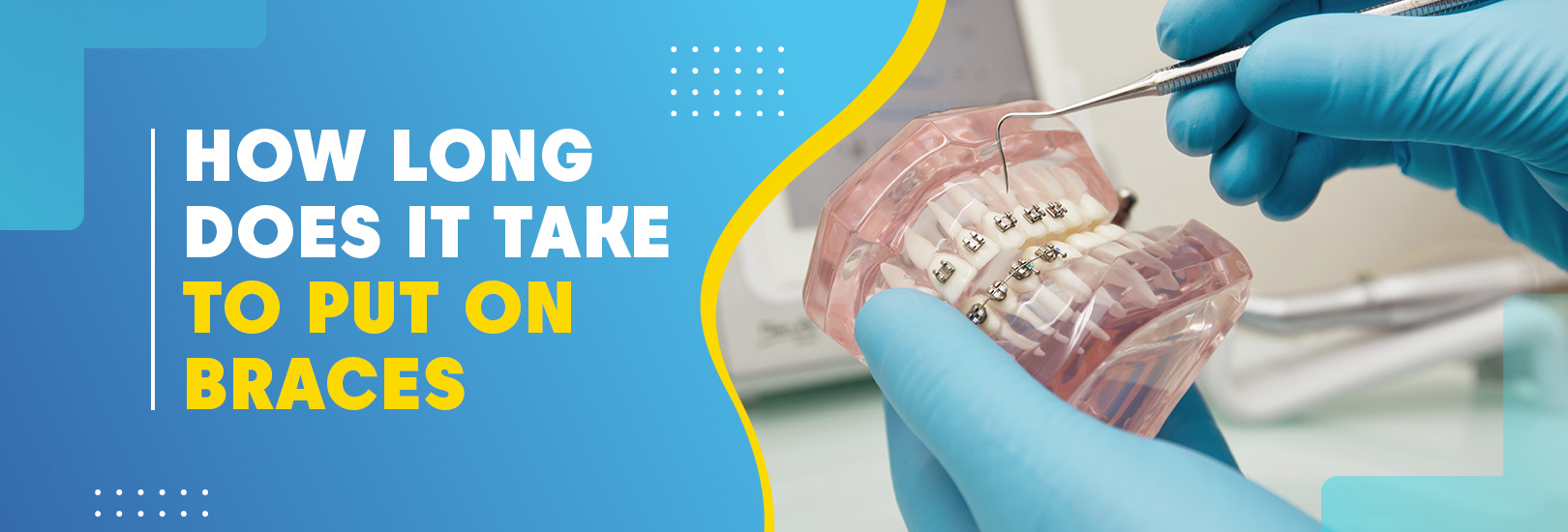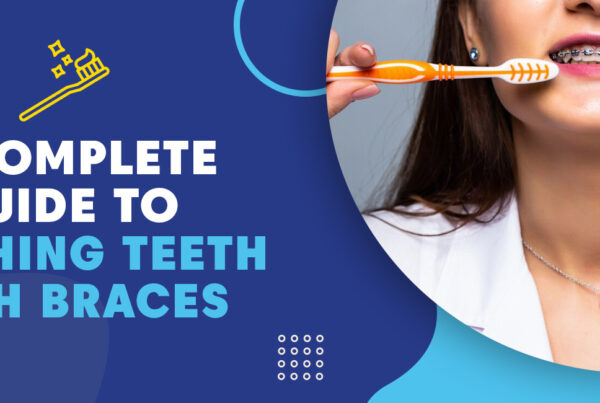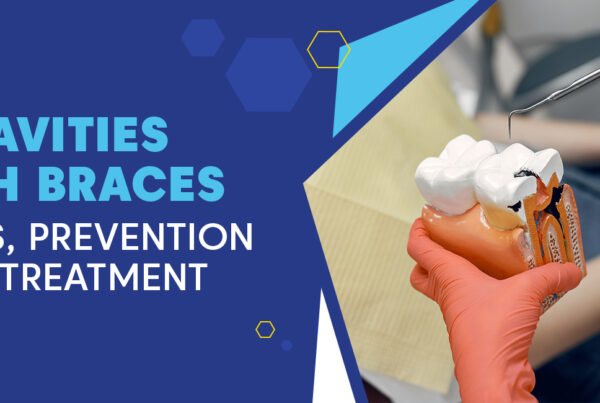Considering getting braces? Ever wondered about how long does it take to have braces put on? Picture yourself sitting in the orthodontist’s chair with your mouth open wide as they carefully place each bracket and wire. In this detailed blog post, we will explore every aspect of the treatment timeline, from the duration of putting on braces to how long do you wear braces for optimal results.
Ideally, it takes one to two hours to place the braces. However, the duration of your orthodontic treatment is influenced by various factors, and it’s important to understand how they can affect the timeline. Whether you choose Traditional Metal Braces, Lingual Braces, or the sleek gold braces, we have all the information on treatment durations. We also want to ensure that you’re well-prepared for your journey towards a straighter smile. We’ll provide essential precautions to take before getting braces, ensuring a smooth and comfortable experience.
How Are Braces Put On?
Braces are orthodontic appliances that are used to straighten teeth and correct bite issues. The process of getting braces involves several steps, and it is important to understand what to expect during this procedure.
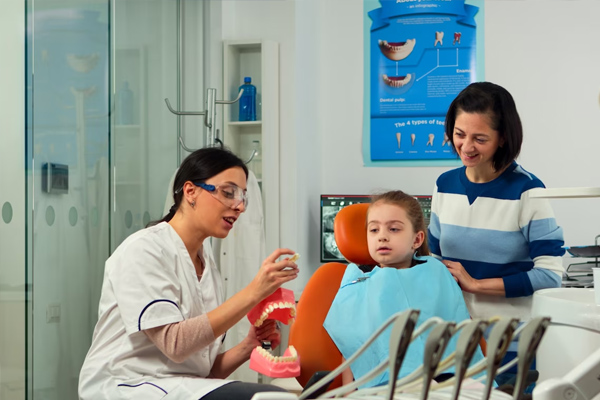
Consultation and Evaluation
To begin the braces journey, your first step is to schedule a consultation with an orthodontist. In this visit, the orthodontist will carefully assess your teeth and jaw alignment to determine whether braces are the appropriate treatment for you.
Preparing the Teeth
After deciding to get braces, your orthodontist will begin the process of preparing your teeth. This involves a thorough cleaning to remove any plaque or tartar buildup.
Bonding the Brackets
After the initial consultation, the next step in the orthodontic process is to bond the brackets onto your teeth. The orthodontist will carefully attach each bracket to the front surface of your teeth using a dental adhesive. To ensure a secure bond, they will then use a special light to cure the adhesive and firmly place the brackets in position.
Attaching the Archwire
Once the brackets are securely in place, the orthodontist will then insert the archwire. The archwire plays a crucial role in applying gentle pressure to shift the teeth into their proper alignment. With precision and care, it is threaded through each bracket and secured using small elastics or metal ties.
Adding Additional Components
In some cases, your orthodontist may add additional components to your braces based on your specific treatment needs. These can include bands, springs, or other appliances that help target and correct specific alignment issues.
Adjustments and Tightening
After your braces are installed, regular appointments with the orthodontist will be necessary for adjustments and tightening. These visits allow the orthodontist to make any needed modifications to the archwire and other components, ensuring that your teeth continue to move into their correct positions.
Prepping for the Braces Placement Process
Initial Consultation
The first step in the braces journey usually involves an initial consultation with an orthodontist. During this appointment, the orthodontist will carefully assess the patient’s dental condition to determine if braces are the right treatment option. This assessment includes reviewing the patient’s dental history, conducting a comprehensive examination of their teeth and jaw, and possibly taking X-rays or impressions for more detailed information.
Treatment Planning
After the initial consultation, the orthodontist will create a customized treatment plan that addresses the patient’s individual needs. This plan considers factors such as desired results, the severity of dental issues, and any potential challenges that may arise during treatment. It will outline how long the braces treatment will last and specify which type of braces will be utilized.
Preparatory Procedures
In certain situations, patients may require preliminary treatments before getting braces. These treatments could involve dental cleanings to promote excellent oral health, the removal of teeth to make space for the braces, or the placement of dental spacers to create room for the brackets.
Discussing Treatment Options
Before getting braces, it’s crucial for patients to have a thorough discussion with their orthodontist about the available treatment options. Different types of braces, including Traditional Metal Braces, Lingual Braces, and gold braces, have varying timelines for placement and treatment. The orthodontist will provide detailed information about each option, considering factors such as aesthetics, comfort, and expected results.
Oral Hygiene Instruction
Proper oral hygiene is essential when undergoing braces treatment. Before getting your braces, your orthodontist will give you detailed instructions on how to maintain good oral hygiene, including specific brushing and flossing techniques for braces. They will also provide guidance on your diet and any necessary dietary adjustments to keep your braces clean and in good condition.
Financial Considerations
Finally, before getting braces, it is important to have a discussion about the financial aspects of the treatment. The orthodontist will go over the cost of braces, any potential insurance coverage, and present available payment plans for consideration.
How Long Do Braces Take To Work?

The time it takes for braces to work and produce the desired results can differ greatly from person to person. This variation is due to individual dental needs. Throughout the treatment, regular adjustments are made to the braces. The frequency of these adjustments, as well as the overall duration of treatment, will depend on each person’s specific case. As a general rule, orthodontists typically schedule adjustments every 4 to 8 weeks. These consistent tweaks and realignments are crucial in ensuring that the braces effectively move the teeth into their intended positions.
Foods to Avoid While Wearing Braces
When you first get braces, it’s crucial to be careful about the foods you consume to ensure a successful treatment journey. Certain foods can harm your braces or become trapped between the brackets and wires, leading to discomfort or potentially affecting the progress of your treatment. Here is a list of foods that you should avoid while wearing braces:

Avoid Hard and Crunchy Foods: Stay away from hard candies, nuts, popcorn, and pretzels as they can put too much pressure on your braces. This pressure can cause the brackets to break
Sticky and Chewy Foods: Avoid foods like caramel, taffy, and gummy candies as they can easily get stuck in your braces. Cleaning around them becomes difficult, which can potentially lead to damage.
Crunchy Fruits and Vegetables: Another key aspect to consider when maintaining a healthy diet with braces is consuming crunchy fruits and vegetables. Carrots and apples, for example, should be cut into small and bite-sized pieces to avoid causing damage to your braces.
Hard Breads and Tough Meats: Foods like bagels, crusty bread, and tough cuts of meat can be challenging to bite and chew with braces. The force required to eat these foods can potentially damage or dislodge your braces.
Sugary Drinks and Acidic Foods: One factor that can negatively impact the health of your teeth while wearing braces is consuming too many sugary drinks or acidic foods. This can contribute to tooth decay and demineralization, compromising the overall well-being of your teeth.
What to Expect After Having Braces Placed
After getting braces, it’s essential to be prepared for any discomfort, adjustments, and proper oral care. The initial period following the placement of braces is crucial as it helps you understand the changes that will occur and how to effectively maintain your braces.
Discomfort and Sensitivity
It is normal to feel some discomfort or soreness after getting braces. This is because your teeth and gums are adapting to the braces and the pressure they exert to align your teeth.
Understanding White Spots
During your braces journey, you may notice the emergence of white spots on your teeth. These spots, referred to as decalcification, are a result of inadequate oral hygiene. Buildup of plaque around the brackets can lead to demineralized areas on the enamel, causing these white marks. However, by maintaining proper dental care, you can prevent further damage.
Adjusting to Post-Braces Sensation
It’s important to note that after getting your braces off, you may experience a slightly “slippery” feeling with your teeth. This sensation is simply because you’re not used to the brackets and wires on your teeth anymore. Give yourself some time to adjust to this new sensation. Soon enough, you’ll fully adapt and appreciate the freedom of having braces-free teeth.
Essential After Care
It’s important to follow the proper aftercare instructions to ensure the success of your orthodontic treatment. Here are some essential steps to take care of your braces and maintain good oral hygiene:
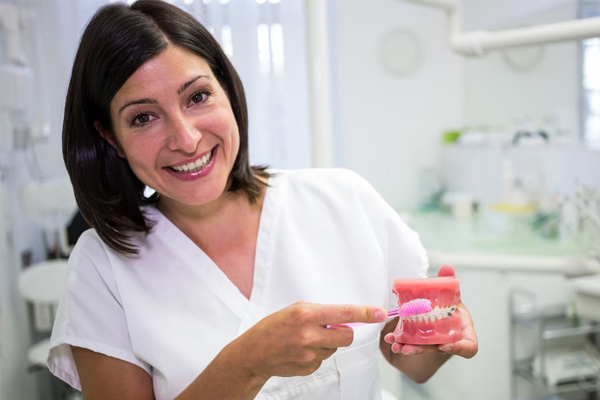
Be Mindful of Habits: If you have any habits like chewing on pencils or biting your nails, it’s important to break these habits while wearing braces. These habits can damage your braces and prolong your treatment time. Stay mindful of your movements and avoid any activities that could potentially harm your braces.
Wear Your Retainers: After your braces treatment, you may be required to wear retainers to maintain the newly aligned position of your teeth. Your orthodontist will provide specific instructions on when and how long to wear your retainers. Proper retainer wear is essential in preventing your teeth from shifting back to their original positions.
Regular Orthodontic Appointments: Your orthodontist will schedule regular check-up appointments throughout your treatment. It’s important to attend these appointments consistently to ensure that your braces are properly adjusted and to address any issues that may arise. Follow your orthodontist’s advice regarding scheduling and maintaining these appointments.
Dietary Restrictions: While wearing braces, certain foods can damage the brackets or wires. Opt for soft foods that are easy to chew and won’t cause damage to your braces. Examples include mashed potatoes, yogurt, pasta, and steamed vegetables.
Oral Hygiene: Maintaining proper oral hygiene is crucial while wearing braces. Make sure to brush your teeth after every meal using a soft-bristle toothbrush and fluoride toothpaste. Pay special attention to cleaning around the brackets and wires, as food particles can easily get trapped there. Use interdental brushes or floss threaders to clean between the teeth and under the wires.
FAQs
How long does it take to put on braces?
The braces put on process typically takes between one to two hours. The time can vary depending on the type of braces that are being put on, as well as the individual patient’s specific needs.
How do I take care of my braces?
To care for your braces, brush your teeth after meals and before bed, using a soft toothbrush and fluoride toothpaste. Avoid hard, sticky foods, wear elastics as directed, and attend regular orthodontist appointments. Use orthodontic wax for discomfort, wear a mouthguard during sports, and drink water to keep your mouth clean. Follow your orthodontist’s instructions, avoid bad habits, and maintain a healthy diet rich in nutrients. Proper care ensures effective treatment and a successful outcome.
How do I know if I need to get braces?
If you are experiencing an issue with your teeth that you think may be due to your braces, it is important to see a dentist to have them evaluated. If it is determined that your braces are the cause of the problem, you may need to have them adjusted or replaced.
Embark on Your Personalized Braces Journey Orthodontic Experts
In conclusion, the timeline for getting braces varies based on individual needs and treatment plans. At Orthodontic Experts, we understand that each patient’s journey is unique. Our team of experts ensures that the process is tailored to your specific requirements, encompassing regular adjustments and meticulous care. As the braces gradually guide your teeth toward their desired alignment, our commitment to your comfort and progress remains unwavering. Rest assured, we are here to support you every step of the way, from the initial placement of braces to the eventual achievement of your ideal smile.


